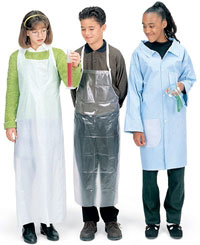
Lab Aprons and Coats, ETA Cuisenaire
Many accidents can be prevented by wearing appropriate personal safety equipment. When working in a laboratory, you should wear a protective apron and gloves to protect your clothes and skin. You should also wear safety goggles or a face shield when performing any test where there is potential danger to the eyes.
The primary purpose of most pieces of personal safety equipment is to prevent chemicals from coming in contact with your body. In every case, the personal safety equipment is merely meant as a temporary barrier to prevent contact with the chemicals.

Lab Aprons and Coats, ETA Cuisenaire
Lab coats and lab aprons will protect your skin and clothes from chemical spills. However, these articles of clothing are permeable. If a spill occurs, the apron or coat should be removed promptly to ensure that the chemical does not soak through to the skin. The picture to the right shows two different types of aprons and a lab coat.
Your hands are at the most risk from chemical spills in the laboratory. As a result, appropriate gloves should be worn when your teacher instructs you to wear them. Pictured below are the two main types of gloves, latex gloves and nitrile gloves used to prevent harmful chemicals from contacting the skin.
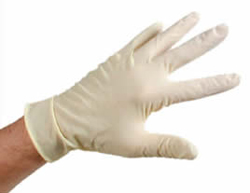
Latex Gloves, Mountainside Medical Equipment
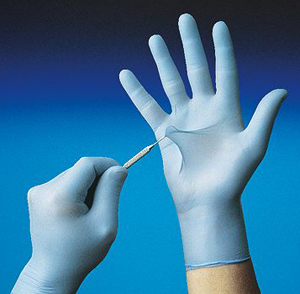
Blue Nitrile Gloves, Mountainside Medical Equipment
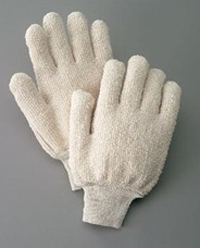
Heat Resistance Gloves, ReStock It
Heat resistance gloves like the ones pictured to the left are used to move hot objects. They do not protect the hands from chemicals.
Safety glasses and safety goggles are used in the laboratory to protect the eyes. Safety goggles provide the best protection from chemicals splashing in the eyes because they protect the sides of the face. Safety glasses do not protect the sides of the face, so chemicals could still get into the eyes. Both safety glasses and goggles are pictured below.
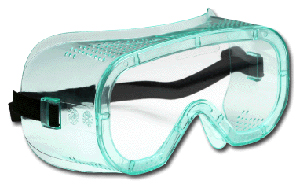
Safety Goggles, Conney
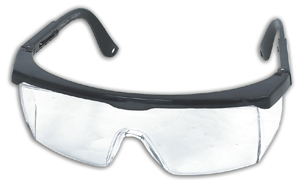
Safety Goggles, ThomasNet